Spatial Skills and Perceptions of Space: Representing 2D Drawings as 3D Drawings inside Immersive Virtual Reality
Abstract
1. Introduction
1.1. The Spatial Skills and the Spatial Perception
1.2. The Importance of Spatial Skills and Perception in the Field of Architecture
1.3. Training of the Spacial Abilities
1.4. The Immersive Virtual Reality
1.5. Drawing and Immersive Virtual Reality
2. Objectives and Hypothesis
- To determine if the sketching of architectural spaces in immersive 3D virtual environments using virtual reality glasses improves spatial skills.
- To confirm if the user immersion in architectural spaces artificially created in virtual reality environments allows for spatial perception and sensorial awareness as if they were performed in real spaces.
- H1A: First-year architecture students improve the components of spatial skills (mental rotation, visualization and orientation) after being trained in the sketching of architectural spaces in immersive VR spaces.
- H2A: First-year architecture students improve their spatial perception after being trained in the sketching of architectural spaces in immersive VR spaces.
- H3A: Immersive spatial reality environments allow for the capturing of user sensations by visualizing and virtually interacting with architectural spaces.
3. Methodology
3.1. Measuring Instruments
3.2. Training Design Based on Architectural Spaces to Draw and Perceive
4. The Experimental Study
4.1. Participants
4.2. Equipment
4.3. Study Description
4.3.1. Training for the Improvement of Spatial Skills
4.3.2. Perceptive Experience in the Virtual World
5. Results
5.1. Results and Analysis of Spatial Skills in ULL
5.2. Results of Spatial Perception in UNSA
6. Discussion
7. Conclusions
Author Contributions
Funding
Informed Consent Statement
Data Availability Statement
Acknowledgments
Conflicts of Interest
References
- Sandnes, F.E. Sketching 3D Immersed Experiences Rapidly by Hand Through 2D Cross Sections. In Online Engineering & Internet of Things; Auer, M.E., Zutin, D.G., Eds.; Springer International Publishing: Cham, Switzerland, 2018; Volume 22, pp. 1001–1013. ISBN 978-3-319-64351-9. [Google Scholar]
- Kvan, T.; Wong, J.T.; Vera, A.H. The Contribution of Structural Activities to Successful Design. Int. J. Comput. Appl. Technol. 2003, 16, 122–126. [Google Scholar] [CrossRef]
- Israel, J.H.; Wiese, E.; Mateescu, M.; Zöllner, C.; Stark, R. Investigating Three-Dimensional Sketching for Early Conceptual Design—Results from Expert Discussions and User Studies. Comput. Graph. 2009, 33, 462–473. [Google Scholar] [CrossRef]
- Tsou, C.-H.; Hsu, T.-W.; Lin, C.-H.; Tsai, M.-H.; Hsu, P.-H.; Lin, I.-C.; Wang, Y.-S.; Lin, W.-C.; Chuang, J.-H. Immersive VR Environment for Architectural Design Education. In Proceedings of the SA ‘17: SIGGRAPH Asia 2017 Posters; ACM Press: New York, NY, USA, 2017; pp. 1–2. [Google Scholar]
- Hermund, A.; Klint, L.S.; Bundgaard, T.S. The Perception of Architectural Space in Reality, in Virtual Reality, and through Plan and Section Drawings. In Proceedings of the Computing for a better tomorrow, Lods, Poland, 19–21 September 2018; Volume 2, pp. 735–744. [Google Scholar]
- Gomes, R.; Aquilué, I.; Roca, E. Cuerpo, espacio y el dibujo arquitectónico. ACE Archit. City Environ. 2017, 12. [Google Scholar] [CrossRef]
- Tversky, B.; Suwa, M.; Agrawala, M.; Heiser, J.; Stolte, C.; Hanrahan, P.; Phan, D.; Klingner, J.; Daniel, M.-P.; Lee, P.; et al. Sketches for Design and Design of Sketches. In Human Behaviour in Design: Individuals, Teams, Tools; Lindemann, U., Ed.; Springer: Berlin/Heidelberg, Germany, 2003; pp. 79–86. ISBN 978-3-662-07811-2. [Google Scholar]
- Lohman, D.F. Spatial ability and g. In Human Abilities: Their Nature and Measurement; Lawrence Erlbaum Associates, Inc.: Hillsdale, NJ, USA, 1996; pp. 97–116. ISBN 0-8058-1800-6. [Google Scholar]
- Stumpf, H.; Eliot, J. A Structural Analysis of Visual Spatial Ability in Academically Talented Students. Learn. Individ. Differ. 1999, 11, 137–151. [Google Scholar] [CrossRef]
- McGee, M.G. Human Spatial Abilities: Psychometric Studies and Environmental, Genetic, Hormonal, and Neurological Influences; American Psychological Association: Washington, DC, USA, 1979; Volume 86, ISBN 1939-1455(Electronic), 0033-2909(Print). [Google Scholar]
- Schneider, W.J.; McGrew, K.S. The Cattell-Horn-Carroll model of intelligence. In Contemporary Intellectual Assessment: Theories, Tests, and Issues, 3rd ed.; The Guilford Press: New York, NY, USA, 2012; pp. 99–144. ISBN 978-1-60918-995-2. [Google Scholar]
- Buckley, J.; Seery, N.; Canty, D. Spatial Cognition in Engineering Education: Developing a Spatial Ability Framework to Support the Translation of Theory into Practice. Eur. J. Eng. Educ. 2019, 44, 164–178. [Google Scholar] [CrossRef]
- Carroll, J.B. Human Cognitive Abilities. A Survey of Factor-Analytic Studies; Cambridge University Press: New York, NY, USA, 1993. [Google Scholar]
- Gómez-Tone, H.C. Impacto de La Enseñanza de La Geometría Descriptiva Usando Archivos 3D-PDF Como Entrenamiento de La Habilidad Espacial de Estudiantes de Ingeniería Civil En El Perú. Form. Univ. 2019, 12, 73–82. [Google Scholar] [CrossRef][Green Version]
- Tartre, L.A. Spatial Orientation Skill and Mathematical Problem Solving. J. Res. Math. Educ. 1990, 21, 216–229. [Google Scholar] [CrossRef]
- Sorby, S.A. Developing 3-D Spatial Visualization Skills. Eng. Des. Graph. J. 1999, 63, 21–32. [Google Scholar]
- Colby, C.L. Perception of Extrapersonal Space: Psychological and Neural Aspects. In International Encyclopedia of the Social & Behavioral Sciences; Elsevier: Amsterdam, The Netherlands, 2001. [Google Scholar]
- Linn, M.C.; Petersen, A.C. Emergence and Characterization of Sex Differences in Spatial Ability: A Meta-Analysis. Child. Dev. 1985, 56, 1479–1498. [Google Scholar] [CrossRef]
- Mitrache, A. Spatial Sensibility in Architectural Education. Procedia Soc. Behav. Sci. 2013, 93, 544–548. [Google Scholar] [CrossRef]
- Akin, Ö.; Erem, Ö. Architecture Students’ Spatial Reasoning with 3-D Shapes. J. Des. Res. 2011, 9, 339–359. [Google Scholar] [CrossRef]
- Suh, J.; Cho, J.Y. Linking Spatial Ability, Spatial Strategies, and Spatial Creativity: A Step to Clarify the Fuzzy Relationship between Spatial Ability and Creativity. Think. Ski. Creat. 2020, 35, 100628. [Google Scholar] [CrossRef]
- Wigfield, A.; Eccles, J.S.; Schiefele, U.; Roeser, R.W.; Davis-Kean, P. Development of Achievement Motivation. In Handbook of Child Psychology; John Wiley & Sons, Inc.: Hoboken, NJ, USA, 2007. [Google Scholar]
- Zimmerman, B.J.; Martinez-Pons, M. Student Differences in Self-Regulated Learning: Relating Grade, Sex, and Giftedness to Self-Efficacy and Strategy Use. J. Educ. Psychol. 1990, 82, 51–59. [Google Scholar] [CrossRef]
- Burton, L.J.; Dowling, D.G. Key Factors That Influence Engineering Students’ Academic Success: A Longitudinal Study. In Proceedings of the Research in Engineering Education Symposium (REES 2009); University of Melbourne: Parkville, VIC, Australia, 2009; pp. 1–6. [Google Scholar]
- Potter, C.; Van Der Merwe, E.; Kaufman, W.; Delacour, J. A Longitudinal Evaluative Study of Student Difficulties with Engineering Graphics. Eur. J. Eng. Educ. 2006, 31, 201–214. [Google Scholar] [CrossRef]
- Sutton, K.; Williams, A.; Tremain, D.; Kilgour, P. University Entry Score Is It a Consideration for Spatial Performance in Architecture Design Students? J. Eng. Des. Technol. 2016, 14, 328–342. [Google Scholar] [CrossRef]
- Connolly, P.; Sadowski, M. Measuring and Enhancing Spatial Visualization in Engineering Technology Students. Age 2009, 14, 1. [Google Scholar]
- Martín-Gutiérrez, J.; Luís Saorín, J.; Contero, M.; Alcañiz, M.; Pérez-López, D.C.; Ortega, M. Design and Validation of an Augmented Book for Spatial Abilities Development in Engineering Students. Comput. Graph. 2010, 34, 77–91. [Google Scholar] [CrossRef]
- Sorby, S.A. Educational Research in Developing 3-D Spatial Skills for Engineering Students. Int. J. Sci. Educ. 2009, 31, 459–480. [Google Scholar] [CrossRef]
- Hegarty, M.; Montello, D.R.; Richardson, A.E.; Ishikawa, T.; Lovelace, K. Spatial Abilities at Different Scales: Individual Differences in Aptitude-Test Performance and Spatial-Layout Learning. Intelligence 2006, 34, 151–176. [Google Scholar] [CrossRef]
- Montello, D.R.; Lovelace, K.L.; Golledge, R.G.; Self, C.M. Sex-Related Differences and Similarities in Geographic and Environmental Spatial Abilities. Ann. Assoc. Am. Geogr. 1999, 89, 515–534. [Google Scholar] [CrossRef]
- Gómez-Tone, H.C.; Martin-Gutierrez, J.; Valencia Anci, L.; Mora Luis, C.E. International Comparative Pilot Study of Spatial Skill Development in Engineering Students through Autonomous Augmented Reality-Based Training. Symmetry 2020, 12, 1401. [Google Scholar] [CrossRef]
- Roca-González, C.; Martin-Gutierrez, J.; García-Dominguez, M.; Carrodeguas, M. del C.M. Virtual Technologies to Develop Visual-Spatial Ability in Engineering Students. Eurasia J. Math. Sci. Technol. Educ. 2017, 13, 441–468. [Google Scholar] [CrossRef]
- Kaufmann, H.; Schmalstieg, D.; Wagner, M. Construct3D: A Virtual Reality Application for Mathematics and Geometry Education. Educ. Inf. Technol. 2000, 5, 263–276. [Google Scholar] [CrossRef]
- Dahmani, L.; Ledoux, A.A.; Boyer, P.; Bohbot, V.D. Wayfinding: The Effects of Large Displays and 3-D Perception. Behav. Res. Methods 2012, 44, 447–454. [Google Scholar] [CrossRef] [PubMed][Green Version]
- Darken, R.P.; Goerger, S.R. The Transfer of Strategies from Virtual to Real Environments: An Explanation for Performance Differences? Simul. Ser. 1999, 31, 159–164. [Google Scholar]
- Lin, C.-H.; Chen, C.-M.; Lou, Y.-C. Developing Spatial Orientation and Spatial Memory with a Treasure Hunting Game. J. Educ. Technol. Soc. 2014, 17, 79–92. [Google Scholar]
- Navarro, I.; de Reina, O.; Rodiera, A.; Fonseca, D. Indoor Positioning Systems: 3D Virtual Model Visualization and Design Process of Their Assessment Using Mixed Methods: Case Study: World Heritatge Buildings and Spatial Skills for Architecture Students. In Proceedings of the 2016 11th Iberian Conference on Information Systems and Technologies (CISTI), Las Palmas, Spain, 15–18 June 2016; pp. 1–6. [Google Scholar]
- Gerson, H.B.P.; Sorby, S.A.; Wysocki, A.; Baartmans, B.J. The Development and Assessment of Multimedia Software for Improving 3-D Spatial Visualization Skills. Comput. Appl. Eng. Educ. 2001, 9, 105–113. [Google Scholar] [CrossRef]
- Martin Gutierrez, J.; Garcia Dominguez, M.; Roca Gonzalez, C. Using 3D Virtual Technologies to Train Spatial Skills in Engineering. Int. J. Eng. Educ. 2015, 31, 323–334. [Google Scholar]
- Regian, J.W.; Shebilske, W.L.; Monk, J.M. Virtual Reality: An Instructional Medium for Visual-Spatial Tasks. J. Commun. 1992, 42, 136–149. [Google Scholar] [CrossRef]
- Cho, J.Y. Three Areas of Research on Spatial Ability in the Architectural Design Domain. J. Archit. Eng. Technol. 2012, 1, 1. [Google Scholar] [CrossRef]
- Schnabel, M.A. The immersive virtual environment design studio. In Collaborative Design in Virtual Environments; Springer: Berlin/Heidelberg, Germany, 2011; pp. 177–191. [Google Scholar]
- Milovanovic, J.; Moreau, G.; Siret, D.; Miguet, F. Virtual and Augmented Reality in Architectural Design and Education. In Proceedings of the 17th International Conference; CAAD Futures: Eindhoven, The Netherlands, 2017. [Google Scholar]
- Sandeep, G.; Harish, P. Tools and Techniques for Conceptual Design in Virtual Reality Environment. Manag. J. Future Eng. Technol. 2017, 12, 8. [Google Scholar] [CrossRef]
- Yang, E.K.; Lee, J.H. Cognitive Impact of Virtual Reality Sketching on Designers’ Concept Generation. Digit. Creat. 2020, 1–16. [Google Scholar] [CrossRef]
- Roberts, G.; Holmes, N.; Alexander, N.; Boto, E.; Leggett, J.; Hill, R.M.; Shah, V.; Rea, M.; Vaughan, R.; Maguire, E.A.; et al. Towards OPM-MEG in a Virtual Reality Environment. NeuroImage 2019, 199, 408–417. [Google Scholar] [CrossRef] [PubMed]
- Kuliga, S.F.; Thrash, T.; Dalton, R.C.; Hölscher, C. Virtual Reality as an Empirical Research Tool—Exploring User Experience in a Real Building and a Corresponding Virtual Model. Comput. Environ. Urban. Syst. 2015, 54, 363–375. [Google Scholar] [CrossRef]
- Yeom, D.; Choi, J.-H.; Kang, S.-H. Investigation of the Physiological Differences in the Immersive Virtual Reality Environment and Real Indoor Environment: Focused on Skin Temperature and Thermal Sensation. Build. Environ. 2019, 154, 44–54. [Google Scholar] [CrossRef]
- Vandenberg, S.G.; Kuse, A.R. Mental Rotations, a Group Test of Three-Dimensional Spatial Visualization. Percept. Mot. Ski. 1978, 47, 599–604. [Google Scholar] [CrossRef]
- Bennett, G.K.; Seashore, H.G.; Wesman, A.G. The Differential Aptitude Tests; Spanish Of.; TEA Ediciones: New York, NY, USA, 1947; Volume 35. [Google Scholar]
- Hegarty, M.; Waller, D. A Dissociation between Mental Rotation and Perspective-Taking Spatial Abilities. Intelligence 2004, 32, 175–191. [Google Scholar] [CrossRef]
- Kozhevnikov, M.; Hegarty, M. A Dissociation between Object Manipulation Spatial Ability and Spatial Orientation Ability. Mem. Cognit. 2001, 29, 745–756. [Google Scholar] [CrossRef]
- Osterrieth, P.A. Le Test de Copie d’une Figure Complexe; Contribution à l’étude de La Perception et de La Mémoire. [Test of Copying a Complex Figure; Contribution to the Study of Perception and Memory.]. Arch. Psychol. 1944, 30, 206–356. [Google Scholar]
- Bornstein, R.A. Normative Data on Selected Neuropsychological Measures from a Nonclinical Sample. J. Clin. Psychol. 1985, 41, 651–659. [Google Scholar] [CrossRef]
- Caffarra, P.; Vezzadini, G.; Dieci, F.; Zonato, F.; Venneri, A. Rey-Osterrieth Complex Figure: Normative Values in an Italian Population Sample. Neurol. Sci. 2002, 22, 443–447. [Google Scholar] [CrossRef] [PubMed]
- Bertolani, L.; De Renzi, E.; Faglioni, P. Normative Data on Non-Verbal Memory Test of Clinical Interest. Arch. Psicol. Neurol. Psichiatr. 1993, 54, 477–486. [Google Scholar]
- Ardila, A.; Rosselli, M.; Rosas, P. Neuropsychological Assessment in Illiterates: Visuospatial and Memory Abilities. Brain Cogn. 1989, 11, 147–166. [Google Scholar] [CrossRef]
- Homolja, M.; Maghool, S.A.H.; Schnabel, M.A. The Impact of Moving through the Built Environment on Emotional and Neurophysiological State-A Systematic Literature Review. In Proceedings of the 25th CAADRIA Conference, Bangkok, Thailand, 5–6 August 2020. [Google Scholar]
- Pallasmaa, J. The Thinking Hand: Existential and Embodied Wisdom in Architecture; Wiley Chichester: Chichester, UK, 2009; ISBN 0-470-77928-4. [Google Scholar]
- Weisberg, S.M.; Newcombe, N.S. How Do (Some) People Make a Cognitive Map? Routes, Places, and Working Memory. J. Exp. Psychol. Learn. Mem. Cogn. 2016, 42, 768–785. [Google Scholar] [CrossRef] [PubMed]
- Carbonell-Carrera, C.; Saorin, J.L.; Hess-Medler, S. Spatial Orientation Skill for Landscape Architecture Education and Professional Practice. Land 2020, 9, 161. [Google Scholar] [CrossRef]
- Veurink, N.; Hamlin, A.J.; Sorby, S. Impact of Spatial Training on “Non-Rotators”. In Proceedings of the 68th Mid-Year Conference, Worcester, MA, USA, 20–23 October 2013; pp. 15–22. [Google Scholar]
- Ghani, I.; Rafi, A.; Woods, P. The Effect of Immersion towards Place Presence in Virtual Heritage Environments. Pers. Ubiquitous Comput. 2020, 24, 861–872. [Google Scholar] [CrossRef]
- Alatta, R.A.; Freewan, A. Investigating the effect of employing immersive virtual environment on enhancing spatial perception within design process. ArchNet-IJAR Int. J. Archit. Res. 2017, 11, 219. [Google Scholar] [CrossRef]
- Moloney, J.; Globa, A.; Wang, R.; Khoo, C. Principles for the Application of Mixed Reality as Pre-Occupancy Evaluation Tools (P-OET) at the Early Design Stages. Archit. Sci. Rev. 2019, 63, 441–450. [Google Scholar] [CrossRef]
- Ergan, S.; Radwan, A.; Zou, Z.; Tseng, H.; Han, X. Quantifying Human Experience in Architectural Spaces with Integrated Virtual Reality and Body Sensor Networks. J. Comput. Civ. Eng. 2019, 33, 04018062. [Google Scholar] [CrossRef]
- Degraen, D.; Zenner, A.; Krüger, A. Enhancing Texture Perception in Virtual Reality Using 3D-Printed Hair Structures. In Proceedings of the 2019 CHI Conference on Human Factors in Computing Systems; ACM: New York, NY, USA, 2019. [Google Scholar]
- Shemesh, A.; Talmon, R.; Karp, O.; Amir, I.; Bar, M.; Grobman, Y.J. Affective Response to Architecture–Investigating Human Reaction to Spaces with Different Geometry. Archit. Sci. Rev. 2017, 60, 116–125. [Google Scholar] [CrossRef]
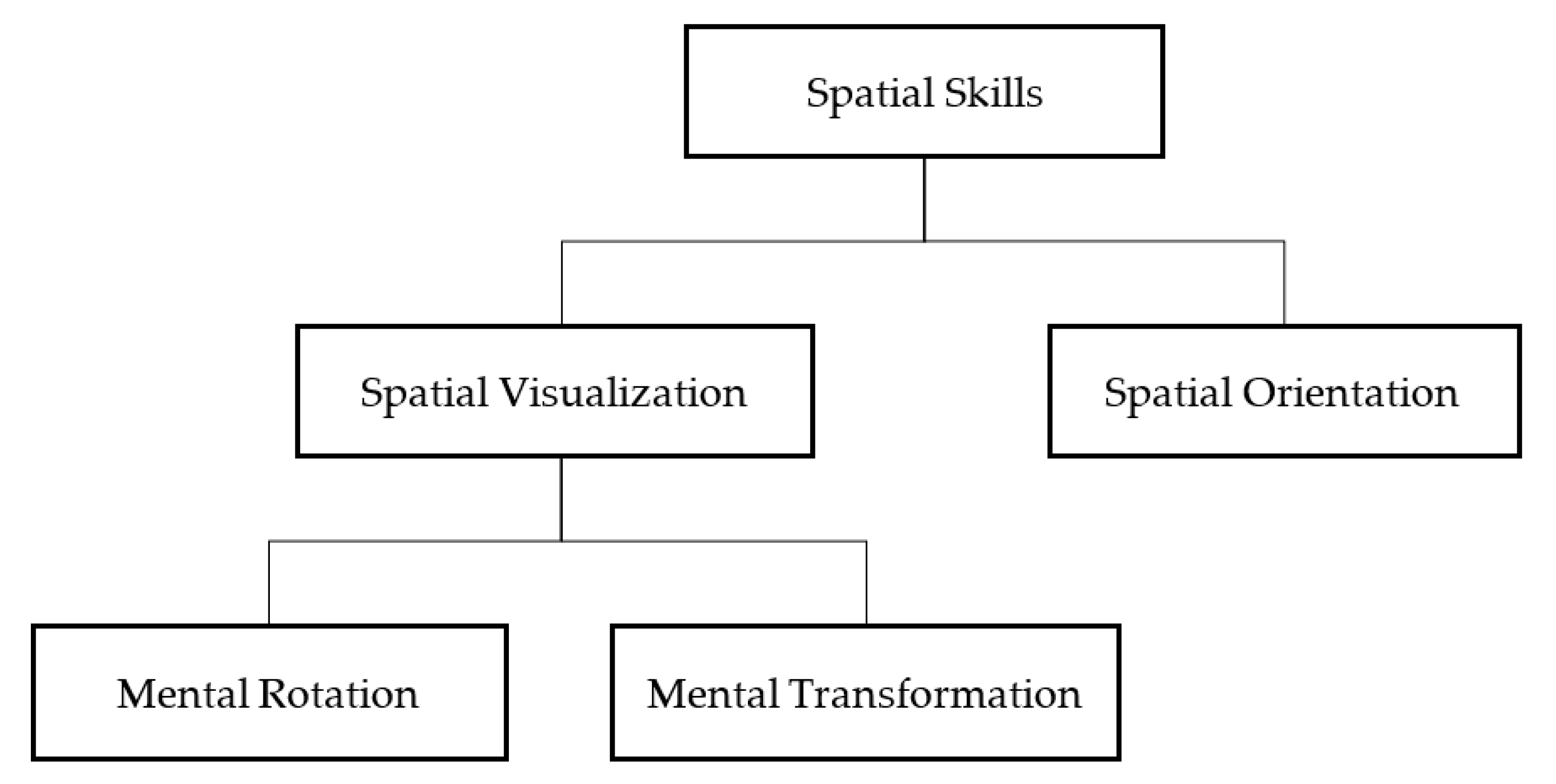



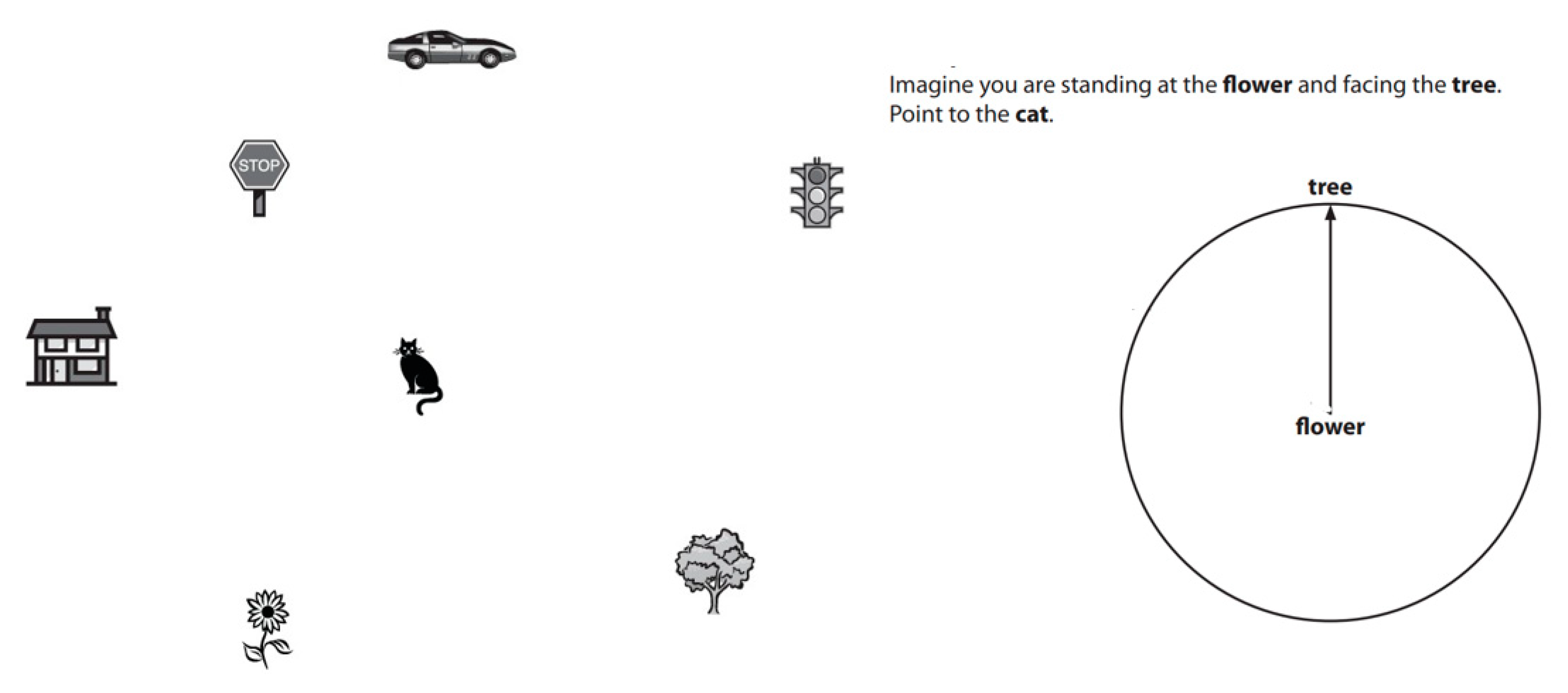
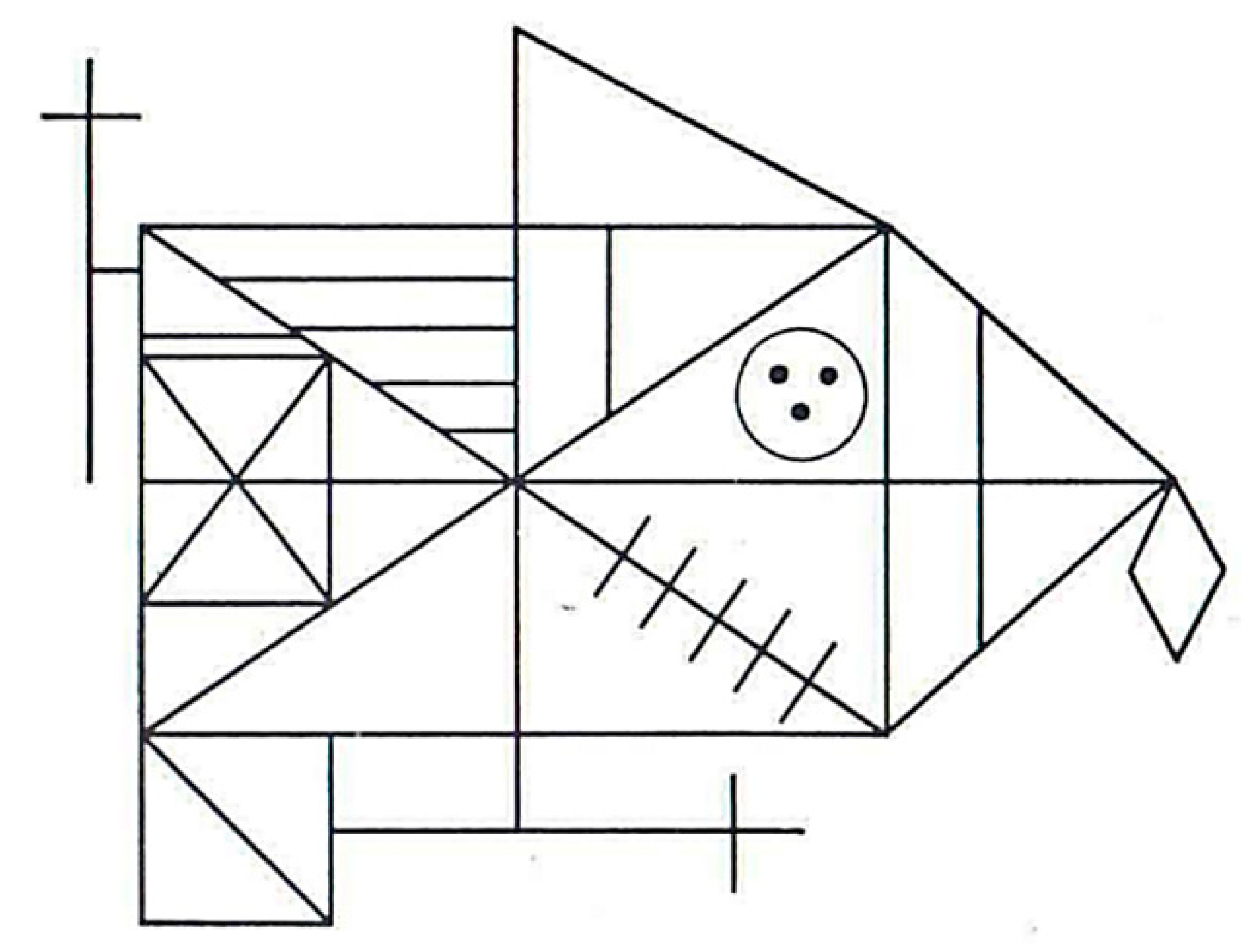


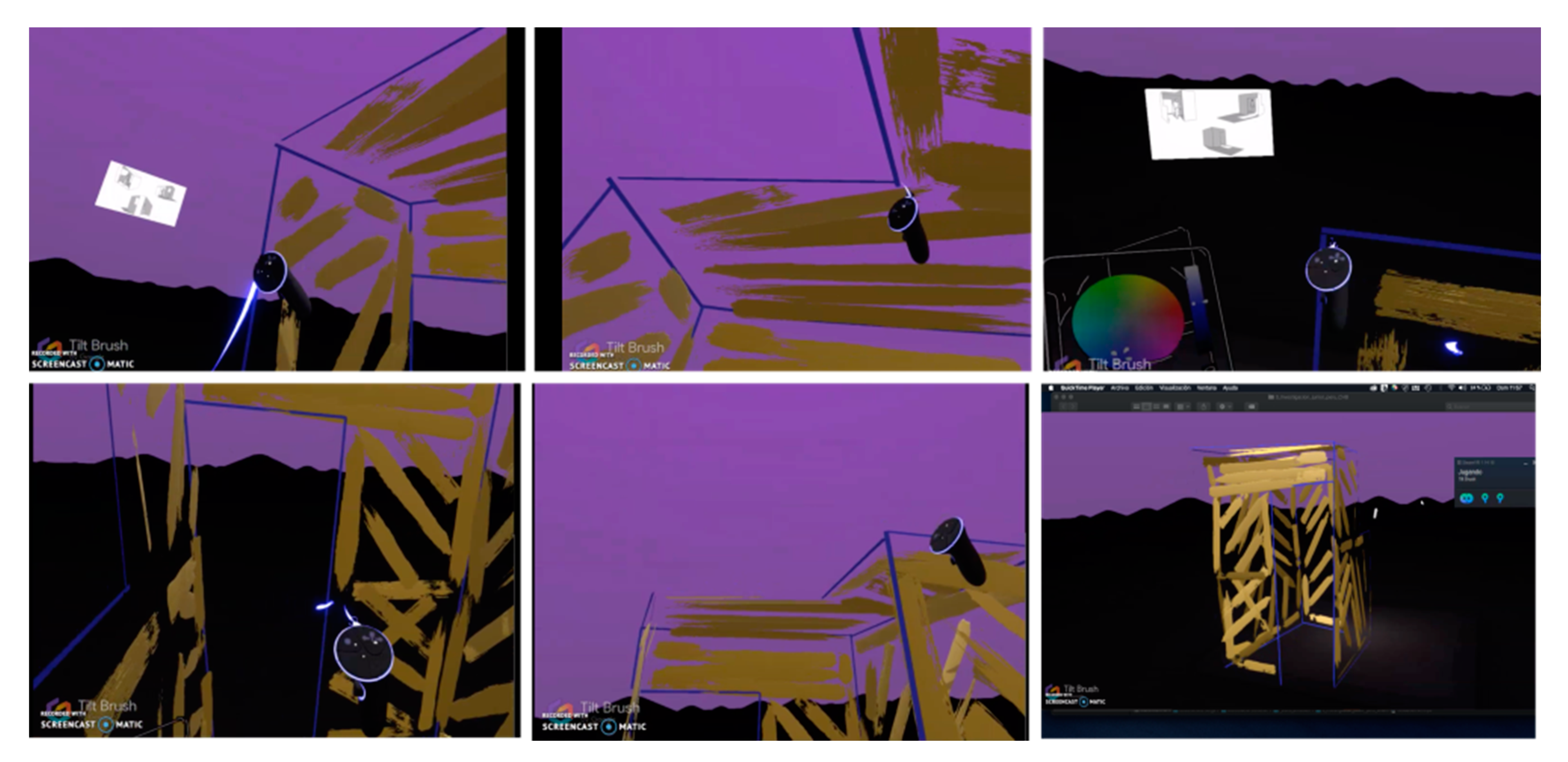


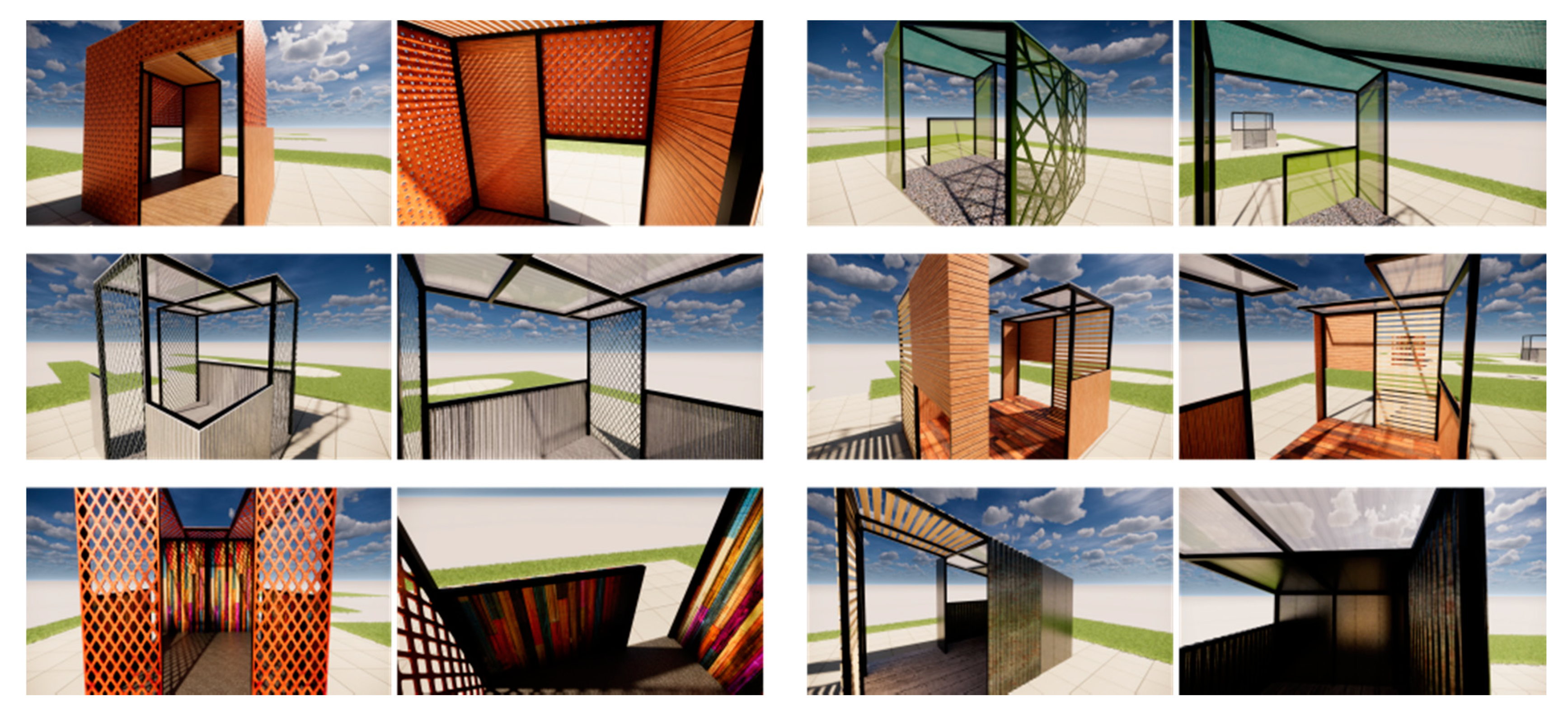
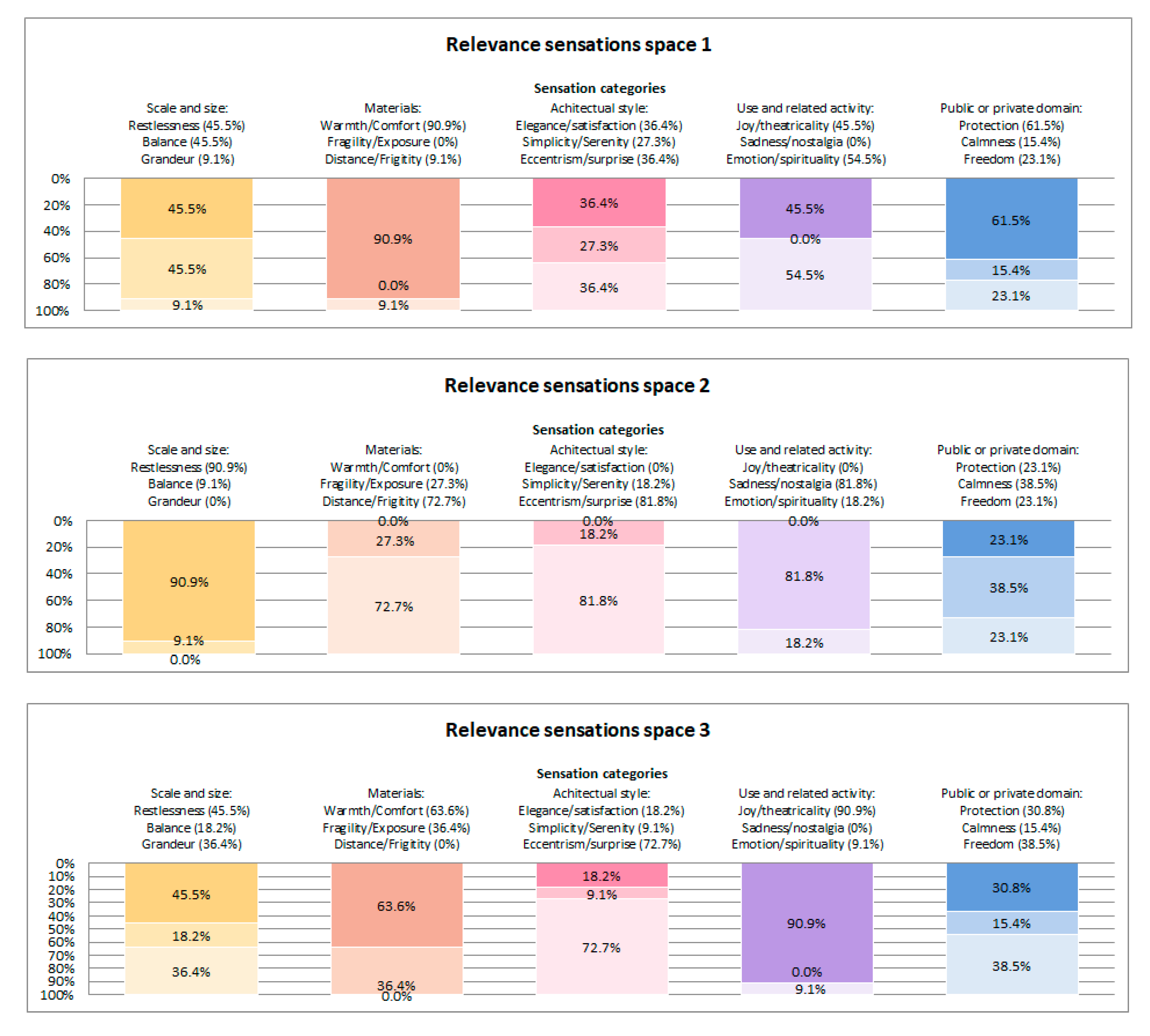
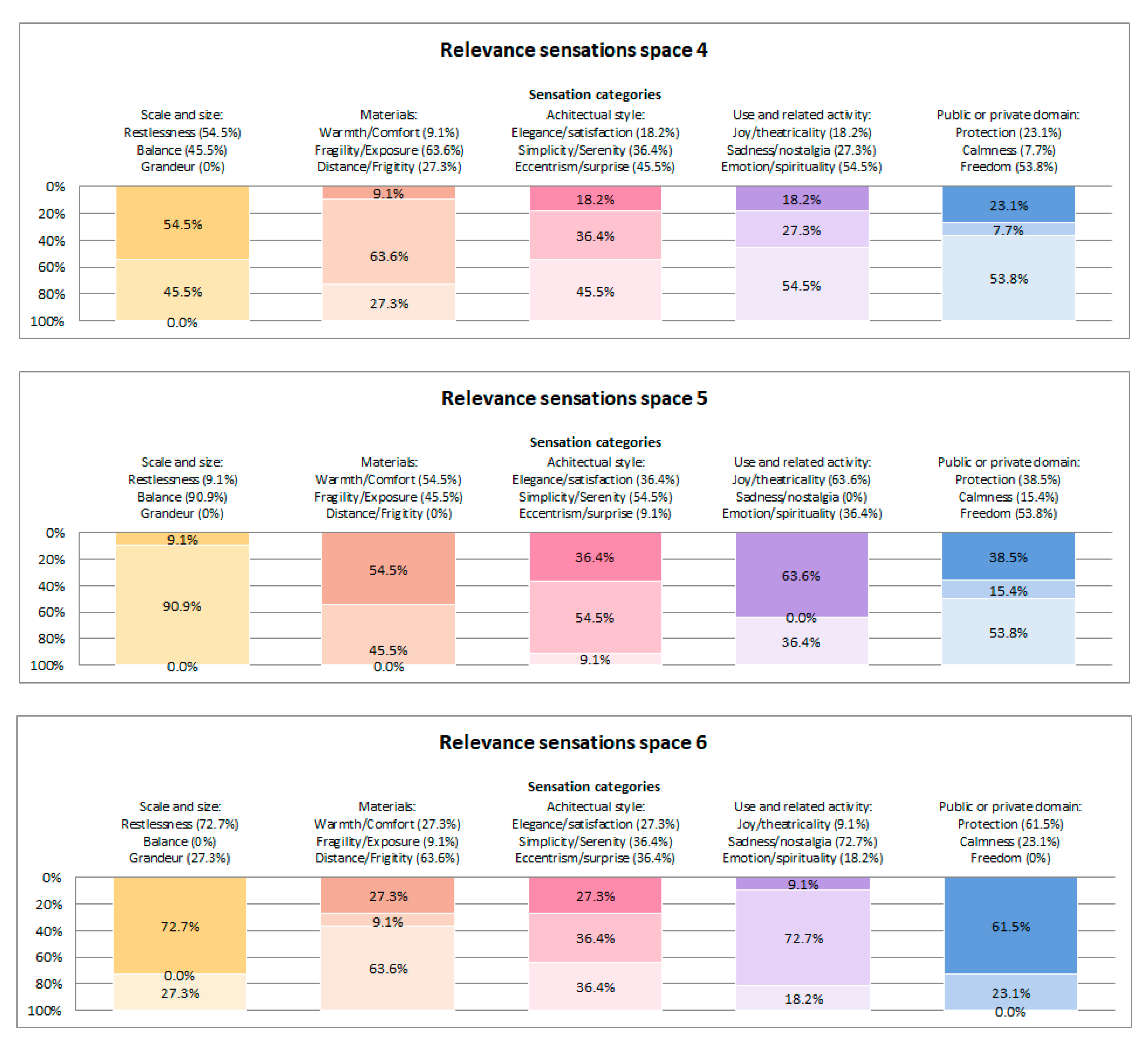
| Categories | Sensations | ||
|---|---|---|---|
| 1. Scale and size | (a) Restlessness | (b) Balance | (c) Grandeur |
| 2. Materials | (a) Warmth/Comfort | (b) Fragility/Exposure | (c) Distance/Frigitity |
| 3. Architectural style | (a) Elegance/Satisfaction | (b) Simplicity/Serenity | (c) Eccentrism/Surprise |
| 4. Use and related activity | (a) Joy/Theatricality | (b) Sadness/Nostalgia | (c) Emotion/Spirituality |
| 5. Degree of enclosure | (a) Protection | (b) Calmness | (c) Freedom |
| MRT Mean Value (SD) | DAT-5 Mean Value (SD) | SOT Mean Value (SD) | ROCFT Mean Value (SD) | ||||
|---|---|---|---|---|---|---|---|
| PRE | POST | PRE | POST | PRE | POST | ||
| Experimentalgroup n= 14 | 17.21 | 23.29 | 29.29 | 36.29 | 46.52 | 28.03 | 27.00 |
| (8.30) | (11.02) | (10.67) | (9.10) | (26.97) | (19.40) | (5.85) | |
| Control group n= 16 | 20.06 | 22.25 | 28.25 | 32.06 | 43.49 | 26.42 | 23.00 |
| (10.81) | (9.57) | (9.64) | (8.50) | (27.08) | (28.37) | (4.98) | |
| Group | Shapiro–Wilk | |||
|---|---|---|---|---|
| F | gl | Sig. | ||
| MRT | Experimental | 0.901 | 14 | 0.115 |
| Control | 0.968 | 16 | 0.825 | |
| DAT5-SR | Experimental | 0.949 | 14 | 0.548 |
| Control | 0.932 | 16 | 0.263 | |
| SOT | Experimental | 0.945 | 14 | 0.479 |
| Control | 0.885 | 16 | 0.052 | |
| ROCFT | Experimental | 0.884 | 14 | 0.055 |
| Control | 0.950 | 16 | 0.528 | |
| Pre MRT | Pre DAT-5 | Pre SOT | |
|---|---|---|---|
| Control Group vs. Experimental Group | p = 0.43 | p = 0.78 | p = 0.89 |
| Gain MRT | Gain DAT-5 | Gain SOT * | |
|---|---|---|---|
| Mean Value (SD) | Mean Value (SD) | Mean Value (SD) | |
| Experimental group | 6.07 | 7 | 29.72 |
| n = 14 | (4.14) | −4.62 | −41.72 |
| Control group | 2.19 | 3.81 | 46.4 |
| n = 16 | −3.94 | −3.71 | −24.38 |
| Space | Sensations Proposed by Designer | Predominant Sensations That Participants Felt |
|---|---|---|
1.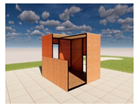 | Warmth-comfort Protection | Warmth-comfort 90.9% Protection 61.5% |
2.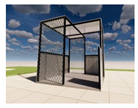 | Sadness-nostalgia Distance-Frigidity | Restlessness 90.9% Sadness-nostalgia 81.8% Eccentrism-surprise 81.8% |
3. | Joy-theatricality Eccentrism-surprise | Joy-theatricality 90.9% Eccentrism-surprise 72.7% |
4.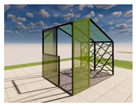 | Fragility-Exposure Freedom | Fragility-Exposure 63.6% Emotion-spirituality 54.5% Restlessness 54.5% |
5. | Balance Simplicity-Serenity | Balance 90.9% Joy-theatricality 63.6% Simplicity-Serenity 54.5% |
6. | Sadness-nostalgia Protection | Restlessness 72.7% Sadness-nostalgia 72.7% |
| Space | Most Representative Perceived Sensations Declared by Participants |
|---|---|
1.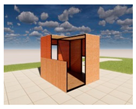 | Warmth-comfort 22.73% Protection 22.73% |
2.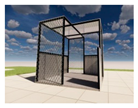 | Restlessness 27.27% Distance-Frigidity 27.27% Fragility-Exposure 13.64% Sadness-nostalgia 13.64% |
3. | Joy-theatricality 36.36% Eccentrism-surprise 22.73% |
4.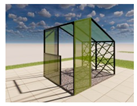 | Fragility-Exposure 22.73% Distance-Frigidity 13.64% Emotion-spirituality 13.64% Restlessness 13.64% |
5.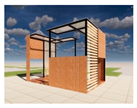 | Freedom 22.73% Warmth-comfort 18.18% Protection 18.18% Fragility-Exposure 18.18% |
6. | Sadness-nostalgia 22.73% Protection 22.73% |
Publisher’s Note: MDPI stays neutral with regard to jurisdictional claims in published maps and institutional affiliations. |
© 2021 by the authors. Licensee MDPI, Basel, Switzerland. This article is an open access article distributed under the terms and conditions of the Creative Commons Attribution (CC BY) license (http://creativecommons.org/licenses/by/4.0/).
Share and Cite
Gómez-Tone, H.C.; Martin-Gutierrez, J.; Bustamante-Escapa, J.; Bustamante-Escapa, P. Spatial Skills and Perceptions of Space: Representing 2D Drawings as 3D Drawings inside Immersive Virtual Reality. Appl. Sci. 2021, 11, 1475. https://doi.org/10.3390/app11041475
Gómez-Tone HC, Martin-Gutierrez J, Bustamante-Escapa J, Bustamante-Escapa P. Spatial Skills and Perceptions of Space: Representing 2D Drawings as 3D Drawings inside Immersive Virtual Reality. Applied Sciences. 2021; 11(4):1475. https://doi.org/10.3390/app11041475
Chicago/Turabian StyleGómez-Tone, Hugo C., Jorge Martin-Gutierrez, John Bustamante-Escapa, and Paola Bustamante-Escapa. 2021. "Spatial Skills and Perceptions of Space: Representing 2D Drawings as 3D Drawings inside Immersive Virtual Reality" Applied Sciences 11, no. 4: 1475. https://doi.org/10.3390/app11041475
APA StyleGómez-Tone, H. C., Martin-Gutierrez, J., Bustamante-Escapa, J., & Bustamante-Escapa, P. (2021). Spatial Skills and Perceptions of Space: Representing 2D Drawings as 3D Drawings inside Immersive Virtual Reality. Applied Sciences, 11(4), 1475. https://doi.org/10.3390/app11041475









